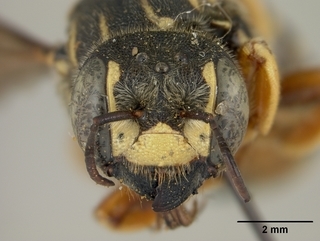
Smithsonian Institution, Entomology Department · 9
Trachusa dorsalis, female, face |
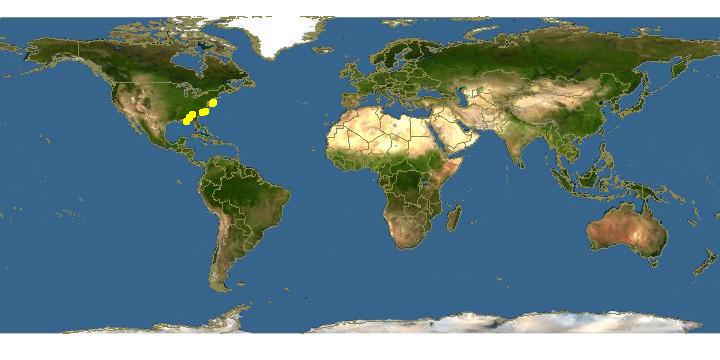
Click on map for details about points.
|
80x5 -
240x3 -
240x4 -
320x1 -
320x2 -
320x3 -
640x1 -
640x2
Set display option above.
Click on
images to enlarge. |
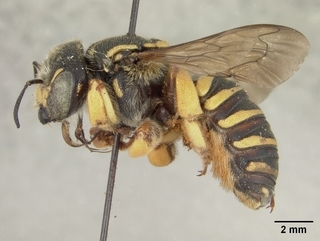
Smithsonian Institution, Entomology Department · 9
Trachusa dorsalis, female, side |
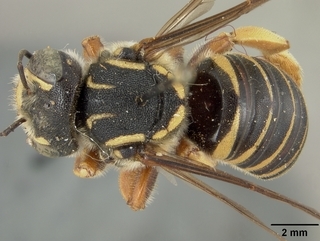
Smithsonian Institution, Entomology Department · 9
Trachusa dorsalis, female, top |
|
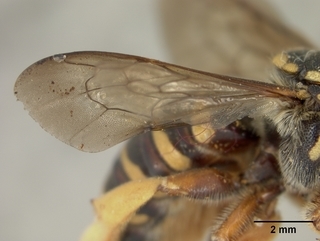
Smithsonian Institution, Entomology Department · 9
Trachusa dorsalis, female, wing |
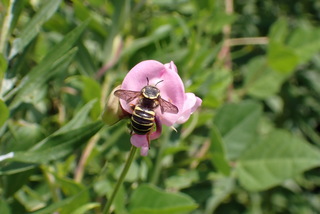
Jason Davis/Delaware Department of Natural Resources and Environmental Control, Division of Fish and Wildlife · 8
Trachusa dorsalis, DE, Jason Davis |
|
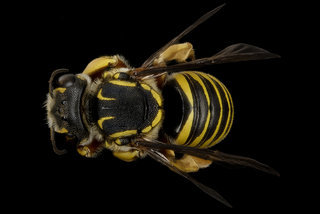
© Copyright source/photographer
· 7
Trachusa dorsalis, f, back, Sussex Co., VA |
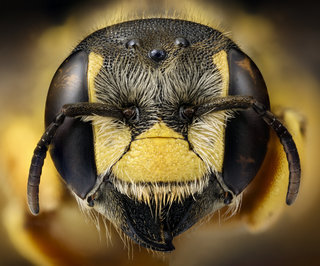
© Copyright source/photographer
· 7
Trachusa dorsalis, f, face, Sussex Co., VA |
|
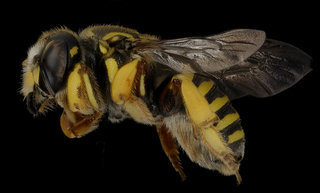
© Copyright source/photographer
· 7
Trachusa dorsalis, f, left, Sussex Co., VA |
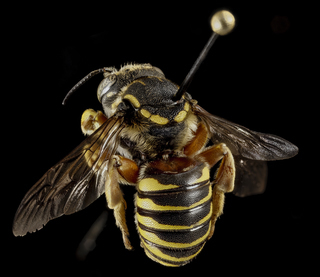
© Copyright source/photographer
· 5
Trachusa dorsalis, M, Back, GA, Baker County |
|
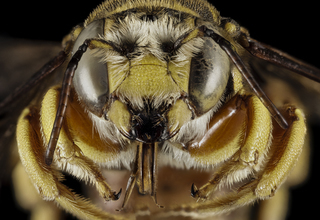
© Copyright source/photographer
· 5
Trachusa dorsalis, M, Face, GA, Baker County |
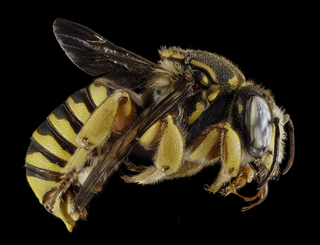
© Copyright source/photographer
· 5
Trachusa dorsalis, M, Side, GA, Baker County |
|
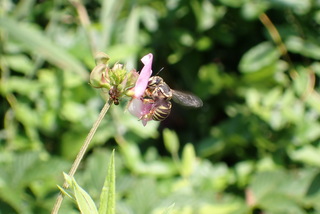
Jason Davis/Delaware Department of Natural Resources and Environmental Control, Division of Fish and Wildlife · 5
Trachusa dorsalis, DE, Jason Davis2 |
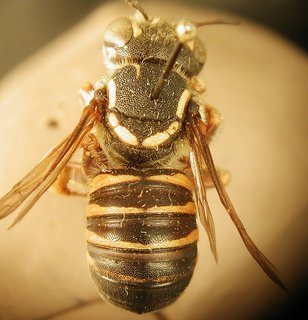
© Mary Paul
· 1
Trachusa dorsalis, femlae, top |
|
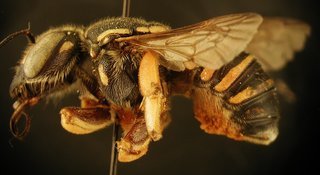
© Mary Paul
· 1
Trachusa dorsalis, femlae, side |
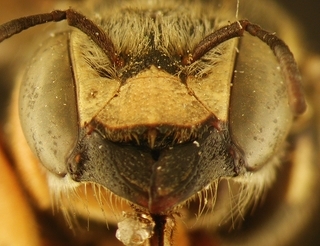
© Mary Paul
· 1
Trachusa dorsalis, femlae, face |
|
Overview |
Reprinted with permission from: Mitchell, T.B. 1960 Bees of the Eastern United States. North Carolina Agricultural Experiment Station Technical Bulletin No. 141.
FEMALE—Length 13 mm.; black, with yellow maculations; clypeus, a broad triangular part of supraclypeal area, lateral face marks extending narrowly nearly to top of eye, and a large area on cheeks, yellow; lateral margins of scutum and a pair of submedian, L-shaped, anterior marks directed posteriorly, axillae in large part, and the broad posterior margin of scutellum, all yellow; tubercles in large part yellow, a small yellow spot on tegulae and a large anterior yellow blotch on pleura; coxae, trochanters and femora largely ferruginous, but front femora margined below with a conspicuous yellow stripe, and mid-femora with a small but elongate yellow spot on lower margin; tibiae yellow on outer face, more ferruginous on inner and posterior faces; mid and hind basitarsi largely yellow, almost as wide as their tibiae, the front basitarsi and the more apical tarsal segments of all legs, ferruginous; spurs brownish-testaceous; terga 1-5 with transverse, yellow bands, broad laterally, gradually narrowed medially, being slightly interrupted on basal tergum, these subapical in position, the narrow, depressed apical margins black; tergum 6 with a pair of very small, lateral, yellow spots; face somewhat longer than distance between eyes; eyes subparallel; lateral ocelli rather widely removed from margin of vertex, but subequally distant from eyes and each other; cheeks about equal to eyes in width; mandibles broadly expanded apically, the dentate edge with one or two barely perceptible teeth; clypeus rather fiat, apical margin with a pair of submedian denticles delimiting a narrow emargination; tegulae finely and densely punctate; wings faintly infuscated, veins piceous; pubescence very short, thin and inconspicuous, entirely pale, barely evident on head above, dorsum of thorax, and abdominal terga, more evident around antennae, on cheeks below and on pleura; ventral scopa entirely yellowish-white; punctures deep and distinct, rather coarse, close and finer below ocelli, more distinct and coarse on maculated areas of face and on vertex, quite close on cheeks; close, deep and distinct on pleura; scutum and scutellum rather coarsely and densely rugoso-punctate; abdominal terga shining, punctures rather fine, somewhat separated along midline, becoming somewhat coarser and closer toward sides, tergum 6 very densely and finely rugoso-punctate, median area somewhat produced and broadly rounded; sternum 6 very broad, abruptly truncate apically.
MALE—Length 14 mm.; black, with yellow maculations; clypeus, mandibles except teeth, lower half of supraclypeal area, anterior surface of scape, lateral facial maculae extending nearly to top of eye, and a rather small spot back of upper end of eye, yellow; lateral margins of scutellum, a pair of longitudinal, submedian, L-shaped maculations on scutum anteriorly, axillae in part, and broad posterior margin of scutellum, all yellow; tubercles margined with yellow and anterior third of tegulae yellow; pleura with a rather small anterior yellow blotch; legs more ferruginous basally but front and mid femora margined with yellow below, hind pair with an apical, yellow spot; all tibiae bright yellow on outer face, more or less ferruginous on the remaining two faces, and all basitarsi yellow, middle pair elongate, hind pair no more than half this length, and front pair extremely short, barely evident; spurs testaceous; abdominal terga 1-5 with transverse yellow bands that are very broad laterally, occupying most of the disc, but strongly narrowed in center, that on 5 relatively broad across entire plate, and 6 almost entirely yellow, with only a very narrow basal margin dark; face considerably longer than distance between eyes above; eyes very slightly convergent below; lateral ocelli subequally distant from eyes and each other, much farther from margin of vertex; cheeks slightly narrower than eyes; mandibles 3- dentate; clypeus rather flat, apical margin nearly straight, with a pair of submedian, dark denticles which delimit a shallow, median, emarginate area; tegulae deeply and quite closely punctate; wings subhyaline, veins and stigma more brownish-ferruginous; pubescence very short, thin and inconspicuous, entirely pale, somewhat ochraceous on head and thorax above, more whitish and dense around antennae, on cheeks below, on pleura and on upper portion of propodeum; punctures quite deep and distinct, very fine just below ocelli, but becoming quite coarse and slightly separated on clypeus and other maculated areas, rather distinctly separated but still quite close on vertex and cheeks; punctures rather fine and close on pleura posteriorly and below, becoming somewhat coarser and more distinctly separated anteriorly and above; scutum and scutellum dull, densely and rather coarsely rugoso-punctate; abdominal terga somewhat shining, punctures deep and distinct, quite close in general, tergum 6 almost rugoso-punctate; tergum 7 largely yellow, with a median, triangular, produced area which over- lies the relatively straight, apical margin, punctures very close but rather deep and distinct; abdominal sterna 1-4 rather fully exposed, basal tergum with a ventral, carinate projection which is bidentate apically, sterna 3 and 4 densely pubescent, hairs becoming more elongate on each extreme side; sterna 5-8 retracted, form as shown (fig. 8); gonostyli of genital armature rather gradually dilated apically, not quite equalling penis valves in length, the cuspis and digitus of the volsellae evident as elongate, spine-like parts interposed between the gonocoxites and base of the penis valves.
DISTRIBUTION—New Jersey to Alabama, August and September.
FLOWER RECORD—Strophostyles.
|
|
|
Names | |
|
|
| Supported by | |
Updated: 2024-04-19 05:00:59 gmt
|